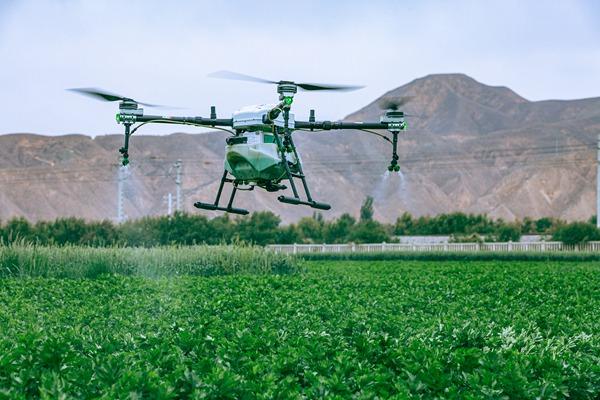Data is a production factor that can be reused and create more value, and its multiplier effect on increasing output and improving production efficiency is increasingly evident. Not long ago, the “Global Digital Economy White Paper (2023)” released by the China Academy of Information and Communications Research showed that from 2016 to 2022, China’s digital economy continued to grow rapidly, with a scale increase of 4.1 trillion US dollars and a compound annual growth rate of 14.2%. The rapid development speed, wide coverage, and unprecedented depth of influence of the digital economy are driving profound changes in production, lifestyle, and governance methods, becoming an important engine for stable growth and transformation. For example, the digital economy is currently a crucial focus in accelerating the transformation and upgrading of agriculture towards intelligence, greenery, and integration.
For a period of time, China’s agricultural modernization process has significantly accelerated, but it also faces multiple constraints of resources, environment, and market, and the pressure to ensure food security, food safety, and ecological security still exists. Promoting the application of digital technology in agriculture is a major solution to these problems.
By utilizing digital technology to enhance the digitalization level of agricultural production processes and developing smart agriculture, it can significantly reduce physical and chemical inputs, improve total factor productivity, enhance the supply capacity of green and high-quality agricultural products, and achieve increased production and efficiency. For example, using satellite remote sensing, aerial remote sensing, and ground Internet of Things, dynamic high-precision monitoring of animal and plant environments (soil, water, atmosphere), life information (growth, development, nutrition, disease, stress), etc., and then sensing data through information collection points, integrating agricultural production management knowledge models, can achieve precise management of production processes such as scientific fertilization, precise feeding, water-saving irrigation, and disease and pest warning and prevention, Helping to alleviate resource and environmental pressures and promote sustainable agricultural development.
Improving the digital level of agricultural circulation, consumption, services and other links can also expand the space for agricultural value-added and efficiency. By comprehensively utilizing modern information technologies such as the Internet of Things, we can carry out quality and safety traceability of agricultural products, achieve efficient management of logistics, distribution, and warehousing, and construct a new pattern of agricultural product circulation. This can effectively reduce transaction links and improve transaction efficiency. Developing new internet-based formats such as crowdfunding agriculture and customized agriculture, and innovating network business models such as shared agriculture and cloud farms can maximize the expansion of various agricultural functions. Providing a series of digital agricultural socialization services for small farmers can introduce modern production factors into them, improve their technological level and production efficiency, and help them catch the modern agricultural fast train. It can be said that by promoting the deep integration of new generation information technologies such as animal networking, big data, artificial intelligence, and blockchain with agricultural production and operation, and empowering the agricultural industry chain, supply chain, and value chain with digitization, the role of data in agricultural development will have a superimposed effect.
It should also be noted that the volume and quality of data determine its potential to create value for agriculture. A good digital agricultural infrastructure is a prerequisite for data collection, exchange, storage, processing, and dissemination, and also determines the timeliness, accuracy, and resolution of data acquisition. Therefore, the level of digital agricultural infrastructure construction should be improved to lay a solid foundation for providing high-quality agricultural data elements. We need to accelerate the construction of intelligent and comprehensive digital agricultural infrastructure with high-speed ubiquitous, integrated heaven and earth, cloud network integration, intelligent and agile, green and low-carbon, safe and controllable capabilities; Improve the coverage level of the Internet of Things in the field of agricultural production, and enhance the integration of fixed and mobile devices, as well as the integration of wide and narrow IoT access capabilities; Improve the level of network infrastructure construction in rural areas, and promote the intelligent transformation of traditional agricultural infrastructure and production equipment.







Please sign in to comment
register